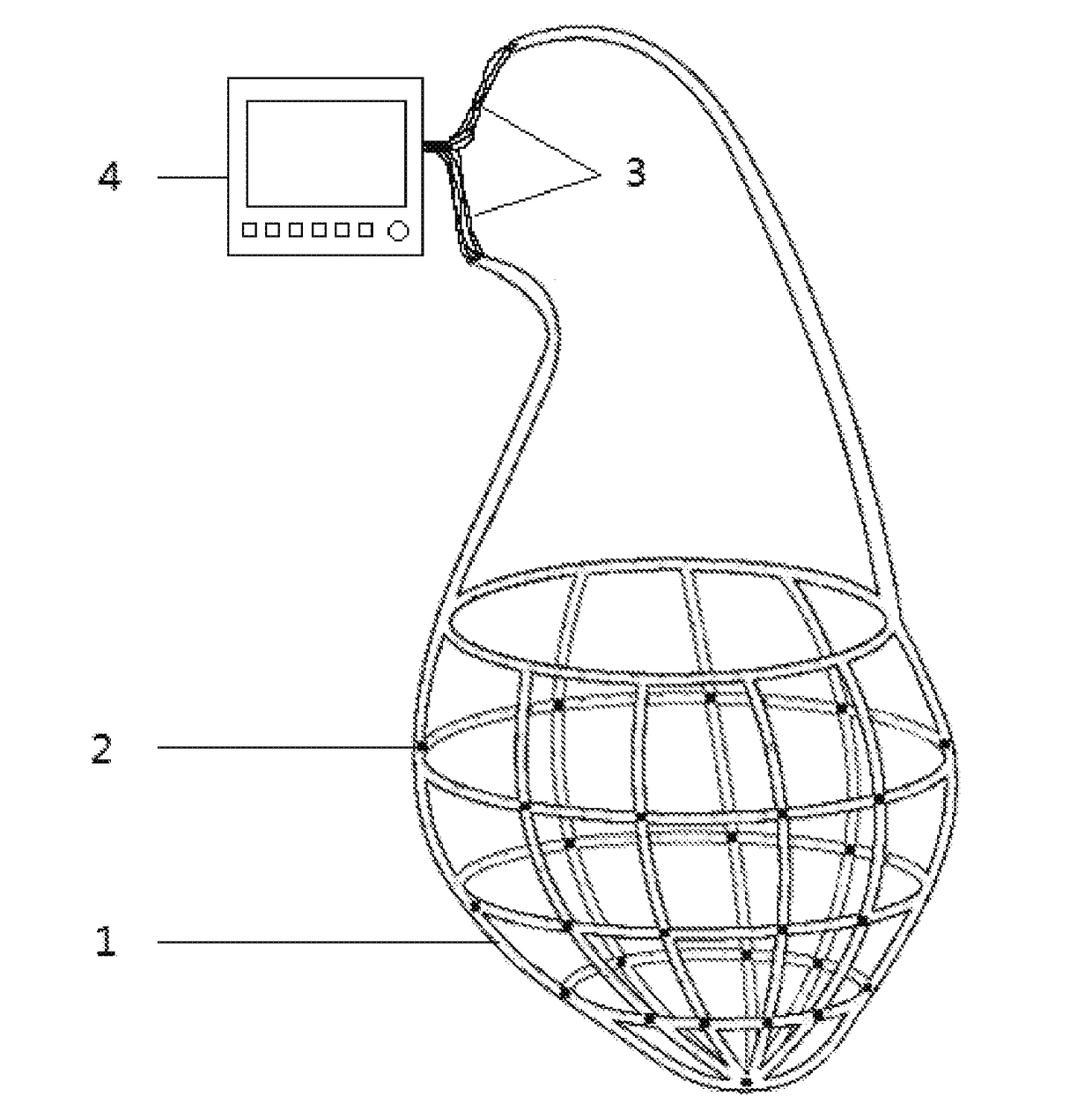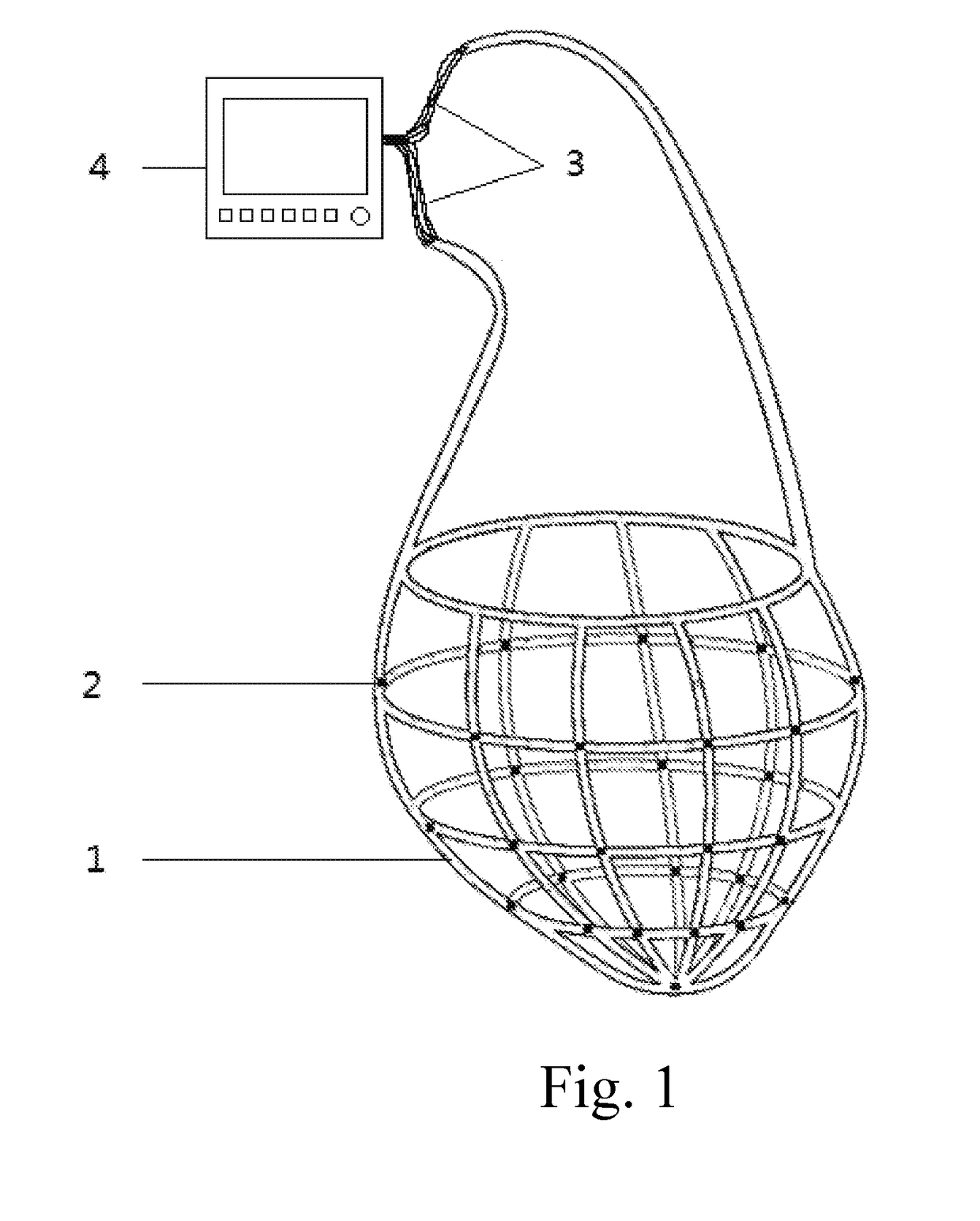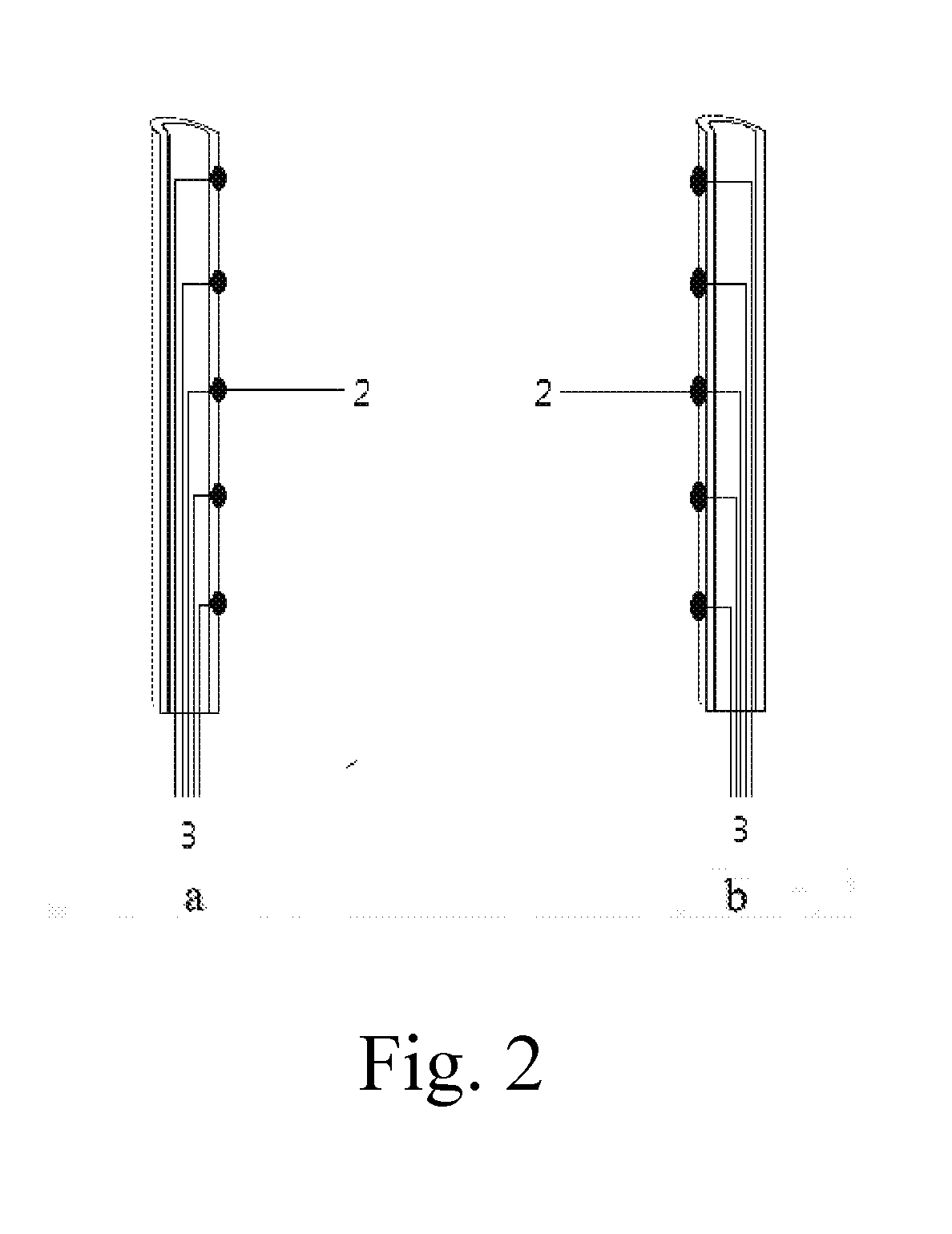Cardiac function monitor and/or intervention system attached outside or inside of heart
a technology of function monitor and intervention system, applied in the field of medical devices, can solve the problems of poor intuitive, microcosmic and accurate reflection, pulmonary congestion and peripheral edema, and the need to end invasive operations, so as to improve the condition of patients
- Summary
- Abstract
- Description
- Claims
- Application Information
AI Technical Summary
Benefits of technology
Problems solved by technology
Method used
Image
Examples
embodiment 1
Preparation of a Cardiac Tube-Network
[0066]It comprises following steps:
(1) performing computer-aided design (CAD) modeling using a conventional method in the field, wherein designs could be derived from digitized image reconstruction on a heart of a patient, e.g., image data could be obtained from finely layered three-dimensional reconstruction or scanning techniques like MRI or CT;
(2) by utilizing liquid silicone, latex, conductive hydrogel, silicone, rubber or polymer plastic materials, printing the cardiac tube-network by a three-dimensional printing technology;
Or alternatively,
① manufacturing a solid structure of the device by a 3D printing device utilizing different materials like blue, green, red, black and white wax;
② soaking the solid structure of the blue wax into liquid silicone, latex, conductive hydrogel, silicone, rubber or polymer plastic material for 1 s to 24 hours;
③ coating with curing agent to form a membrane shaped structure; or it is exposed to a temperature ran...
embodiment 2
[0067]A surface attached cardiac function monitor and / or intervention system comprises of a cardiac support device and a cardiac function monitor device and / or a cardiac function intervention device;
[0068]The cardiac support device is a cardiac tube-network. Structure is shown in FIG. 1, 1—cardiac tube-network; 2—physiological and biochemical sensor, 3—wire, 4—cardiac function monitor device.
[0069]The cardiac support device is attached on an external surface of a ventricle or an atrium or adhered on an internal surface of the cardiac chamber. The cardiac function monitor device is connected with the physiological and biochemical sensor which could be embedded in the tube walls, filled in the aperture of the tube walls or adhered on an internal or external surface of the cardiac support device.
embodiment 3
[0070]The basic structure is identical to the embodiment 2. Tube-network is composed of hollow tubes. All the hollow tubes are completely communicated or form a plurality of independent regions. It is intercommunicated within the region, and is not communicated between the regions. The wire of the physiological and biochemical sensor passes through the hollow tube of the tube-network and connects the function monitor device on one end of the tube-network. The structure is shown in FIG. 2, when the tube-network is attached on an external surface of the ventricle / atrium, the physiological and biochemical sensor is adhered on an internal side (see FIG. 2a) of the tube-network; and when the mesh is adhered on an internal surface of the internal cardiac chamber, the physiological and biochemical sensor is adhered on an external side of the tube-network (see FIG. 2b).
PUM
 Login to View More
Login to View More Abstract
Description
Claims
Application Information
 Login to View More
Login to View More - R&D
- Intellectual Property
- Life Sciences
- Materials
- Tech Scout
- Unparalleled Data Quality
- Higher Quality Content
- 60% Fewer Hallucinations
Browse by: Latest US Patents, China's latest patents, Technical Efficacy Thesaurus, Application Domain, Technology Topic, Popular Technical Reports.
© 2025 PatSnap. All rights reserved.Legal|Privacy policy|Modern Slavery Act Transparency Statement|Sitemap|About US| Contact US: help@patsnap.com



